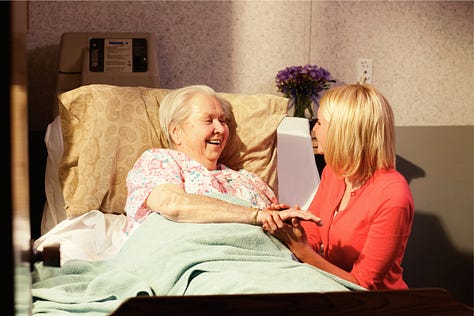Lesson From Bloch's Miracle at Bethesda
Thomas S. Monson's explanation of the painting and the story changed my life.
Thomas S. Monson, civic and religious leader, loved the painting Christ Healing the Sick at Bethesda by Carl Heinrich Bloch. He placed it on the cover of Providing in the Lord’s Way: A Leaders’ Guide to Welfare. He had Brigham Young University purchase the original for the MYU Museum of Art. He explained his feelings at the dedication of a visitor’s center on Welfare Square. I attended the dedication and personally heard his explanation.
The Two Main Characters in the Painting
First, Thomas Monson asked the audience to identify the two main characters in the painting: which characters drew the eye of the beholder. They answered, “Christ” and “the man in the red hat.”
He then gave an amazing analysis showing how the painter highlighted both characters. The Christ figure captured our attention because it was the largest single color in the painting—bright white.
Positioning the man in the red hat required more subtle techniques. First, he put him in the red hat. Drivers (and police officers) notice red cars most prominently. Second, he has one of the most noticeable facial expressions in the painting. Third, most lines in the painting point to the man in the read hat:
The folds of the tent housing the victim of the palsy point to him
Christ’s extended arm point at the man in the red hat, not the one in the tent
The forearm of the woman holding the water jug points to our red-hatted friend
The pillar he leans against act as a giant off-white arrow pointing to the red hat
The rim of the pool circulate to the man in the red hat
He attracts the eye because of his pose to jump in the pool at the first ripple



The Story Depicted by the Painting
The painting portrayed a story found in John 5: 2-9. President Monson read it to the audience.
Now there is at Jerusalem by the sheep market a pool, which is called in the Hebrew tongue Bethesda, having five porches. In these lay a great multitude of impotent folk, of blind, halt, withered, waiting for the moving of the water. For an angel went down at a certain season into the pool, and troubled the water: whosoever then first after the troubling of the water stepped in was made whole of whatsoever disease he had.
And a certain man was there, which had an infirmity thirty and eight years. When Jesus saw him lie, and knew that he had been now a long time in that case, he saith unto him, Wilt thou be made whole? The impotent man answered him, Sir, I have no man, when the water is troubled, to put me into the pool: but while I am coming, another steppeth down before me.
Jesus saith unto him, Rise, take up thy bed, and walk And immediately the man was made whole, and took up his bed, and walked: and on the same day was the sabbath.
President Monson emphasized that the man in the red hat did not appear in the scriptural story. Then, he asked, “Who is the man in the red hat?”. He answered his own question with, “He is the man who could have carried the other man into the water when the angel stirred the water.”
President Monson highlighted that the man appeared poised to jump in at the first ripple. Yes, he had a small leg problem, but nothing compared to the man in the tent. President Monson stated that, ironically, if he had carried the man into the water, they would have both been the first in and would have been healed.
The lesson Thomas S. Monson taught us that day included a recognition to be on the lookout for people in need to see how I can help them.
Photo by Brigham Young University and The Church of Jesus Christ of Latter-day Saints
Please consider reading or subscribing to my other articles
12,000 Dreams Podcast (Mondays)
Scholarships at Any Age (Wednesdays)
Let Your Dreams Work (Thursdays)
Cultivate Career Dreams (Fridays)




